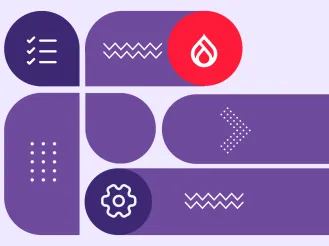Storytelling in the Higher Education Recruitment Process
The decision to choose a university is likely one of the biggest financial and time commitments a person will make. It’s a big deal - often a life-changing experience. To persuade prospective students to take that leap of faith, higher-ed sites need to tell a story that is carefully architected to speak to their fears, hopes, and dreams. When a user is making a big life investment, a website must in turn invest in a deeper exercise of empathy and appeal to them on at least three levels: their emotion, their intellect, and their sense of “self” or ego. This is what we mean by “storytelling.”

Storytelling: What it is (and more importantly), what it isn’t
Universities often misunderstand what “telling a story” means, overloading sites with news stories and PR, promoting awards the institution has won, or faculty achievements. Too often, a university will seek to explain to the user how amazing the institution is. This is typically off-putting to users, in the same way that people will tend to avoid someone who can only talk about how great they are in real life. Research consistently indicates that users are not particularly interested in promotional content. A better, but still not ideal, version of this consists of nominally relevant but “one-off” stories, such as profiles of research projects. A lot of effort goes into this content, but it's typically largely neglected by the key target audience. Most prospective students are not compelled by promotional content. Of the hundreds of students we’ve interviewed when designing sites for higher education, none have mentioned valuing a news article or press release. They do, however, care about stories they can identify with. Let’s look at an example from one of our partners, Trinity University: Instead of Trinity speaking to the prestige and accomplishments of its golf program, they chose to articulate the experience of a student in the program and the benefits they realized as a result. "Trinity uses the "above the fold" area of its homepage to showcase stories from students, faculty and alumni. In a rotating slideshow featuring bright, vibrant photography of Trinity Tigers in real-world educational and service-orientated scenarios" said Jeanna Balreira, Associate Director, Creative Services for Trinity University. "Through this method we're able to tell our story with captivating, honest stories of others. Each photograph is complimented by a short article that ties each story into our top five brand messages" The most successful pitches get users to think about themselves, and how their life could be enhanced through connecting with a product or service. Storytelling is not just a pitch - it's a conversation that iteratively lowers resistance via a calibrated appeal to emotion, intellect, and self-identity. Some questions we can ask when creating content include:
- Who are the users that make the enrollment decision? Prospective students, parents, or both?
- What are the most important factors for this user when choosing a university or college?
- What aspects of the institution are they most likely to identify with? Prestige, campus life, institutional affiliation?
The Mechanics of Storytelling
In order to create a compelling story for converting prospective students into applicants, we’ll need to lead them through a deliberate thought sequence, presenting key triggers in an order that will have meaning to the user. To do so, we’ll need to:
- Characterize and empathize with the user (this can be achieved through various techniques - and hopefully, more than one - such as user interviews and creating a persona)
- Demonstrate to the user that we understand and have anticipated the factors they value in their decision-making process
- Structure the content in terms of sequence and messaging to lead them through a deliberate thought sequence, demonstrating:
- That we understand their hopes, ambitions, and fears
- That we can answer their hope and ambitions, and address their fears
- That people recognizably analogous to themselves have benefited from this experience
Here’s an example from our friends at Trinity University: These statistics are targeting prospective students, specifically the profile of an first-year student at Trinity. This strategy appeals to the intellect and self-perception of the user, letting them know they are the right fit and will do well with other first year students. Here’s an example of storytelling designed to appeal to emotion:
The campus tour is a popular way of appealing to emotion; it’s an interactive experience drawing on the senses, meant to project the viewer into the daily life they will experience. Our research has shown that prospective students want to see the “real” and “authentic” experience of student life, including photos of the cafeteria, student lounge, dorms and other amenities. "Virtual tours have become such a prominent part of our enrollment process that we've actually started using VR glasses at college fairs," added Balreira. You can read more about Trinity's use of virtual reality technology here. Storytelling Best Practices Storytelling is an authentic conversation personalized to the targeted user. Although technology can play a role in telling a targeted story to a given user type, most of the work involved in storytelling involves, well, human thought! We’ve discussed a number of best practices for storytelling throughout this post:
- Understand your audience deeply through user research and/or persona development
- Carefully consider the order and priority of the prospective student’s decision-making factors (note that this will be different for every school)
- Understand that logic, emotion and self-identity play a role in decision making - a compelling story often has all of these components
- Enrollment is a major decision and it will take many small, incremental touch points to increase interest and remove barriers
- PR, self promotion, and “brochure marketing” will often not have a meaningful impact on a prospective student’s enrollment decision
- Every individual story on a page should have a goal and speak to a larger, overall narrative on the site
Have questions? Contact us and we can walk through your current site and how you might be able to improve your storytelling. Photo Credits: Anh-Viet Dinh, Trinity University Web Marketing Team, Trinity.edu








